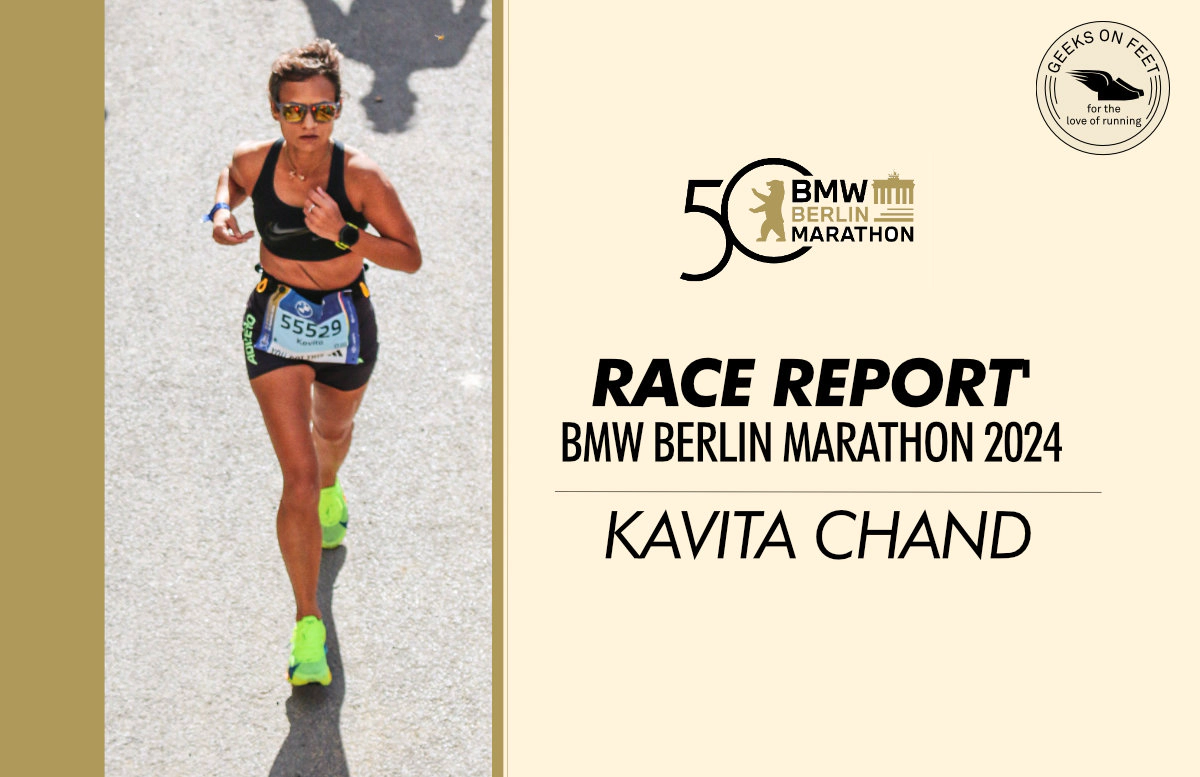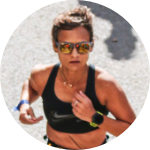
The Berlin Marathon offers broad roads, amazing weather, and a flat course—ideal for fast running. While it’s a crowded race, being placed in the initial waves makes it manageable, though you’ll still need to dodge the crowd throughout. Hydration points can be extremely crowded and slippery, causing some time loss. Though there are quite a few turns, the broad roads make navigating the course easier. Crowd support is strong throughout, adding to the race’s energy. Maurten, the official hydration partner, provides drink mix at multiple stations, and gels are available in the second half of the race.
After 2 months of base building, I followed a 10-week goal-specific training plan for a 3:30 marathon. I ran three times a week and strength trained 2-3 times a week. I also did evening recovery jogs twice a week. On weekdays, I ran short tempos; the initial weeks focused on building speed, and later, I trained my legs for race pace. On Sundays, I did long runs at an easy-to-steady pace to build endurance. I ran two 28Ks and three 32Ks as part of my long runs. I started tapering in the last 2 weeks before the race. During my taper weeks, I focused on short tempos at race pace during the weekdays and easy 20K runs on weekends. Throughout the training phase, I focused on my nutrition and ensured my bio-markers were on point by repeating blood tests every 3 months. I tried to sleep at least 7 hours most nights and even enjoyed some afternoon siestas whenever possible.
I struggled to get a German visa appointment, so I used France as a port of entry to Europe. My travel for the race started on September 25th to Paris for an overnight stay, which allowed me to have a good 10K run in Paris before the race. On the evening of the 26th, I landed in Berlin from Paris. Our stay was managed by Active Holidays, and I got my race entry through them, so the whole experience in Berlin, both pre- and post-race, was well managed. Having all the Ashletes participating in the Berlin marathon at the same place kept me engaged and helped calm my nerves during meals.
We decided to reach the race expo first thing in the morning on September 27th, given the long queues the day prior. There was almost a 1 km queue for entry to the expo, and it took us 2 hours in total to collect the bib, buy merchandise, etc. It’s a good idea to visit the expo early to ensure you get your sizes, as smaller sizes run out quickly. Alternatively, race merchandise can be bought from Adidas stores. I did a 5K shakeout run on the morning of the 28th, prior to race day, along the race course with other 5K runners (there was a 5K race happening that day). It was a good experience and gave me a feel for racing on the course at a similar time with a similar crowd.
A message from the coach on the evening before the race is always a confidence booster: “We are simply doing what we know we are capable of.” I knew I had trained for it all these weeks, and now I just had to execute what I had prepared for.
Coral A-D start time was 9:15, and I was in Coral D. The late start time gave us the liberty to sleep in. I woke up around 5 a.m. before my alarm rang, had a light breakfast around 7 a.m., and left for the race by 8 a.m. It was within walking distance, and having the company of a fellow Ashlete until the start line was very comforting. The weather was cold, and I didn’t carry an extra layer to discard, so I had to sacrifice a sweatshirt that I liked—but it was worth it :)
Coral D was super crowded, and I could hardly move an inch from where I entered the coral until the race started. I had to ask a tall guy standing next to me to throw my sweatshirt to the side :) The atmosphere was electrifying, and the crowd’s energy kept me warm, even though the weather was freezing. Coral A started at 9:15 a.m., but I crossed the start line only at 9:32 a.m.
My idea was to run a bit faster in the first 10K to have some buffer. I felt strong, and the first 10K went very smoothly, so I decided to maintain the pace. I sipped water at every hydration point and took one Maurten gel after every 7K. The hydration points were crowded, and I lost some time there, but I tried to make it up in the following kilometers. My watch showed a consistent average pace of 4:55/4:56, ensuring I was well under the 3:30 target. I didn’t pay much attention to the kilometer markings on the course, and that’s a lesson—don’t follow the watch blindly :) I ran a strong, steady race, well in control, with no low moments or struggles, apart from trying to dodge the crowd at times. I ran negative splits in the last 2 kilometers with a strong finish.
5km - 4:59
10km - 5:00
15km - 4:59
20km - 4:59
25km - 5:02
30km - 5:00
35km - 5:00
40km - 4:59
Finish - 4:50
This is also a BQ for the 2026 Boston Marathon for me. I have been dreaming of a BQ for the last 5 years. There were many highs and lows throughout the journey, but finally, the self-belief and well-structured process to achieve this goal worked to materialize this dream.

Kavita Chand has been running since 2017, graduated to Marathon distance in 2019, was working full time throughout her training years, moved out of corporate life in July this year, also a mom to 9 years old.
.